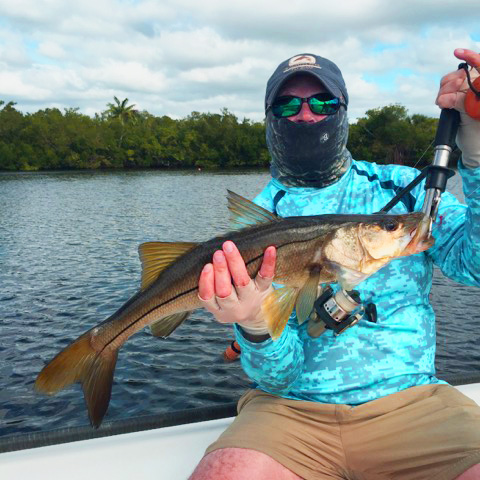by Capt. Mike Manis

It’s the beginning of a transitional period around the harbor with some of our favorite inshore species on the move, providing some of the best opportunities of the year. As fall approaches, the next two months have good potential and this is just the beginning. For redfish, as the days begin to get a bit shorter and the water temperature cools down they begin their spawning period. As a result, the fish group or “school” up. They can show up in just about any of the bays and sounds that surround the harbor, as well as the flats on either side. To the north, the grass flats on either side of the intracoastal inside Stump Pass in Lemon Bay are always worth a look. A little further south in Gasparilla Sound, just about any flat outside Whidden’s Creek and towards the western edge of Bull Bay, could be good. That being said, probably one of the most probable spots to find schooling reds is Pine Island Sound. Over the years, there hasn’t been a more consistent area. It’s a lot of ground to explore, but with so many passes bringing clean, cooler Gulf water, it’s simply great habitat.
In addition, larger breeding size fish that have migrated to offshore schools to live out their lives tend to make occasional visits inshore during this fall spawn. The beach can be a great place to look for these larger fish.
Snook, if they haven’t already started, are close to being on the move. In a matter of speaking, compared with redfish, one is coming and one is going. In other words, while the redfish spawn is just starting, the snook spawn is winding down. They’re coming off the beaches and deeper troughs outside major flats preparing to settle down near backcountry creek systems when the water temperature starts to get a little too cool for their tropical liking. Moreover, they’re hungry and need to fatten up after the spawn and before food gets scarce over the winter. Unlike redfish, snook won’t be hanging out in open bays and sounds, as they prefer sticking closer to shorelines and in particular, mangrove shorelines. With all the creek systems adjacent to Turtle Bay, any shoreline inside here can produce. Also, although it’s a busy area, the West Wall can be very good as it has quite a few creek systems and ends at the Myakka River, which is where lots of snook are going to end up later this year. The other side of Charlotte Harbor, the east side or “East wall” consists of a labyrinth of islands that runs from Pirate Harbor north to Punta Gorda. Because of the island network, it’s not as busy as the West Wall and is one of my favorite spots, although it’s too big to call a spot, to look for snook. There’s definitely more going on with the fall bite, but it’s just a great time to target reds and snook. Did I mention they’ll both readily eat a fly, soft plastic, or plug.
Until next month, good tides
